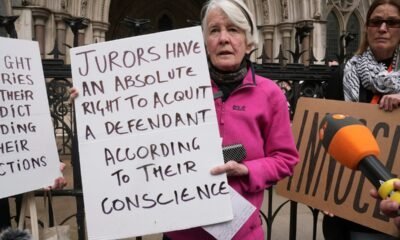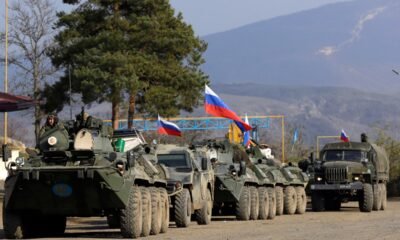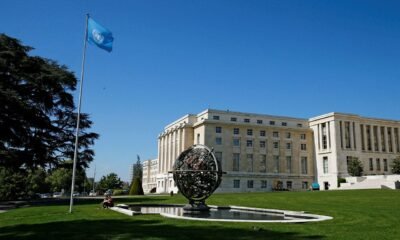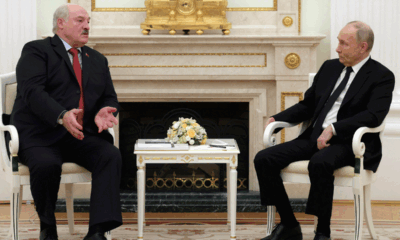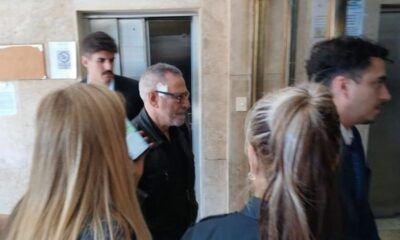INTERNACIONAL
Full UN membership won’t help Palestinians with statehood, US ambassador says

- U.S. Ambassador to the United Nations Linda Thomas-Greenfield has voiced concerns about a U.N. resolution.
- The resolution supports full membership of the Palestinian Authority.
- Thomas-Greenfield said the proposal wouldn’t necessarily contribute to a two-state solution.
U.S. Ambassador to the United Nations Linda Thomas-Greenfield said on Wednesday she did not see a U.N. resolution recommending the Palestinian Authority become a full U.N. member helping lead to a two-state solution to the Israeli-Palestinian conflict.
Thomas-Greenfield made the comments at a news conference in Seoul, after being asked whether the United States was open to recognise the request by the Palestinian Authority to have full U.N. membership.
«We do not see that doing a resolution in the Security Council will necessarily get us to a place where we can find… a two-state solution moving forward,» said Thomas-Greenfield.
JEWISH ORGANIZATION LEADER SAYS ISRAEL WILL BE PROTECTED BY GOD, DESPITE ATTACKS BY IRAN OR ITS PROXIES
She said U.S. President Joe Biden had categorically said that Washington supported a two-state solution and was working on the ground to get that in place as soon as possible.
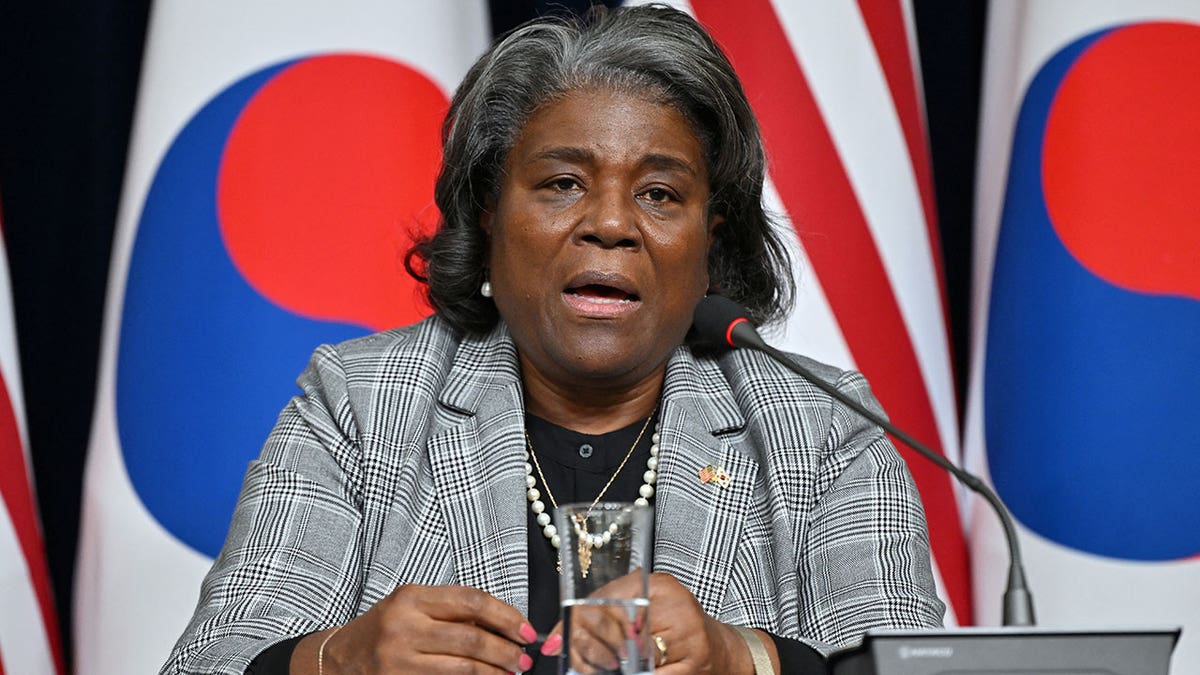
U.S. Ambassador to the United Nations Linda Thomas-Greenfield speaks during a press conference at the American Diplomacy House in Seoul on April 17, 2024. Thomas-Greenfield said on Wednesday she did not see a U.N. resolution recommending the Palestinian Authority become a full U.N. member helping lead to a two-state solution to the Israeli-Palestinian conflict. (JUNG YEON-JE/Pool via REUTERS)
The Palestinian Authority is expected to push the 15-member Security Council to vote, as early as Thursday, on a draft resolution recommending it become a full member of the world body, diplomats said. Security Council member Algeria circulated a draft text late on Tuesday.
A U.N. Security Council committee considering the application «was unable to make a unanimous recommendation» on whether it met the criteria, according to the committee report seen by Reuters on Tuesday.
CLICK HERE TO GET THE FOX NEWS APP
An application to become a full U.N. member needs to be approved by the Security Council – where the United States can cast a veto – and then at least two-thirds of the 193-member General Assembly.
Little progress has been made on achieving Palestinian statehood since the signing of the Oslo Accords between Israel and the Palestinian Authority in the early 1990s.
Among the obstacles are expanding Israeli settlements, and Israel’s U.N. Ambassador Gilad Erdan has said that the Palestinian Authority had not met the required criteria for statehood.
The Palestinian Authority, headed by President Mahmoud Abbas, exercises limited self-rule in the West Bank and is Israel’s partner to the Oslo Accords. Hamas in 2007 ousted the Palestinian Authority from power in the Gaza Strip.
INTERNACIONAL
A tiny grain of nuclear fuel is pulled from ruined Japanese nuclear plant, in a step toward cleanup

A robot that has spent months inside the ruins of a nuclear reactor at the tsunami-hit Fukushima Daiichi plant delivered a tiny sample of melted nuclear fuel on Thursday, in what plant officials said was a step toward beginning the cleanup of hundreds of tons of melted fuel debris.
The sample, the size of a grain of rice, was placed into a secure container, marking the end of the mission, according to Tokyo Electric Power Company Holdings, which manages the plant. It is being transported to a glove box for size and weight measurements before being sent to outside laboratories for detailed analyses over the coming months.
DRONE AIMS TO EXAMINE JAPAN’S DAMAGED FUKUSHIMA NUCLEAR REACTOR FOR THE FIRST TIME
Plant chief Akira Ono has said it will provide key data to plan a decommissioning strategy, develop necessary technology and robots and learn how the accident had developed.
The first sample alone is not enough and additional small-scale sampling missions will be necessary in order to obtain more data, TEPCO spokesperson Kenichi Takahara told reporters Thursday. «It may take time, but we will steadily tackle decommissioning,» Takahara said.
Despite multiple probes in the years since the 2011 disaster that wrecked the. plant and forced thousands of nearby residents to leave their homes, much about the site’s highly radioactive interior remains a mystery.
The sample, the first to be retrieved from inside a reactor, was significantly less radioactive than expected. Officials had been concerned that it might be too radioactive to be safely tested even with heavy protective gear, and set an upper limit for removal out of the reactor. The sample came in well under the limit.
This photo released by Tokyo Electric Power Company Holdings (TEPCO), shows a robot, top right, clips a tiny gravel of what it believed to be melted fuel debris at the No. 2 reactor of the Fukushima Daiichi nuclear power plant in Okuma, Fukushima, northern Japan, on Oct. 30, 3024. (Tokyo Electric Power Company Holdings via AP)
That’s led some to question whether the robot extracted the nuclear fuel it was looking for from an area in which previous probes have detected much higher levels of radioactive contamination, but TEPCO officials insist they believe the sample is melted fuel.
The extendable robot, nicknamed Telesco, first began its mission August with a plan for a two-week round trip, after previous missions had been delayed since 2021. But progress was suspended twice due to mishaps — the first involving an assembly error that took nearly three weeks to fix, and the second a camera failure.
On Oct. 30, it clipped a sample weighting less than 3 grams (.01 ounces) from the surface of a mound of melted fuel debris sitting on the bottom of the primary containment vessel of the Unit 2 reactor, TEPCO said.
Three days later, the robot returned to an enclosed container, as workers in full hazmat gear slowly pulled it out.
On Thursday, the gravel, whose radioactivity earlier this week recorded far below the upper limit set for its environmental and health safety, was placed into a safe container for removal out of the compartment.
The sample return marks the first time the melted fuel is retrieved out of the containment vessel.
Fukushima Daiichi lost its key cooling systems during a 2011 earthquake and tsunami, causing meltdowns in its three reactors. An estimated 880 tons of fatally radioactive melted fuel remains in them.
The government and TEPCO have set a 30-to-40-year target to finish the cleanup by 2051, which experts say is overly optimistic and should be updated. Some say it would take for a century or longer.
CLICK HERE TO GET THE FOX NEWS APP
Chief Cabinet Secretary Yoshimasa Hayashi said there have been some delays but «there will be no impact on the entire decommissioning process.»
No specific plans for the full removal of the fuel debris or its final disposal have been decided.
-
POLITICA2 días ago
Ricardo Jaime se entregó en Comodoro Py: cumplirá su condena por la tragedia de Once en prisión
-
POLITICA2 días ago
Javier Milei y el gabinete felicitaron a Donald Trump: “Puede contar con Argentina para llevar a cabo su tarea”
-
POLITICA1 día ago
El Gobierno advirtió que cerrará Aerolíneas Argentinas si los gremios no frenan las medidas de fuerza
-
INTERNACIONAL2 días ago
¿A qué hora se conocerán los resultados oficiales de las elecciones en Estados Unidos 2024?
-
ECONOMIA3 días ago
Elecciones EE.UU.: El ‘arma de doble filo’ que puede alargarse en el tiempo Por Investing.com
-
ECONOMIA3 días ago
Meta mantiene la prohibición de nuevos anuncios políticos tras las elecciones Por Investing.com

